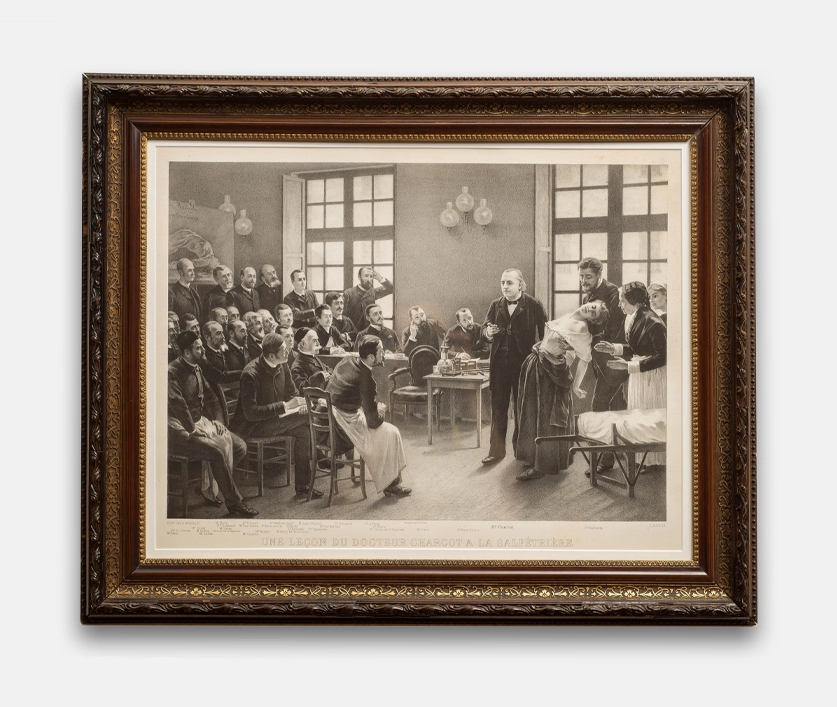introduction
Charcot: From Iconography to Archeology
In 1885 Freud received a grant to study in Paris at the Salpêtrière hospital under the famous neurologist Jean-Martin Charcot. Charcot used the method of hypnosis to treat patients who displayed physical symptoms without a clear organic cause and were diagnosed with hysteria. The print Une leçon clinique du Dr. Charcot à la Salpêtrière, which hangs over Freud’s couch, is a copy of the original by André Brouillet that now hangs in Paris Descartes University. It depicts one of Charcot’s Tuesday lessons, during which he would demonstrate the ‘stages of hysteria’ to a fascinated male audience. As a result of Charcot’s work at the Salpêtrière, the condition of hysteria became an object of study through the display of its visible symptoms. To disseminate evidence of this new approach to treatment, the physician Désiré-Magloire Bourneville published a multi volume work entitled Iconographie de la Salpêtrière, which contained hundreds of photographs of Charcot’s ‘hysterical’ patients.
Although inspired by Charcot’s insights, Freud came to distrust the method of hypnosis, with its dubious sexual power relations, as well as the theatricality of Charcot’s demonstrations which foregrounded the visual display and cataloguing of symptoms. Freud began to think of the mind as an archaeological site, which the psychoanalyst had to dig into to discover the causes of neurotic symptoms with the hope of curing them. When Freud was writing The Interpretation of Dreams, he treated himself to a copy of the archaeologist Heinrich Schliemann’s Ilios, which described his discovery of the supposed ancient city of Troy. Freud found inspiration in Schliemann’s account whilst documenting his own discovery of ‘the royal road to the unconscious processes of the mind’ by analysing dreams.

Une leçon clinique du Dr. Charcot à la Salpêtrière
Print of engraving by E. Pirodon after the oil painting by Andre Brouillet, 1888
LFRD 4378